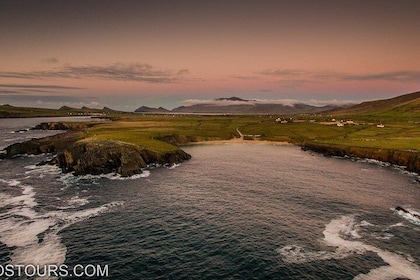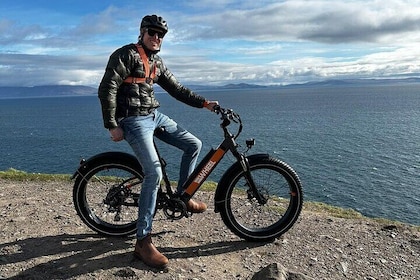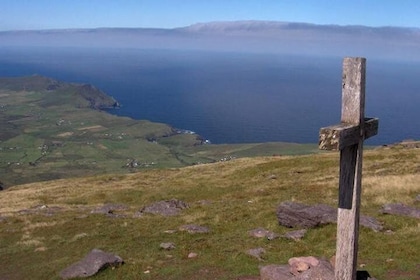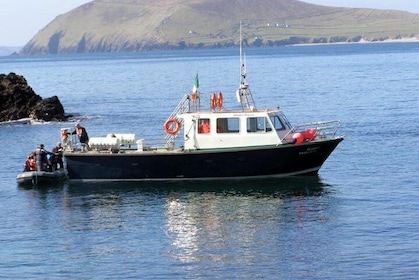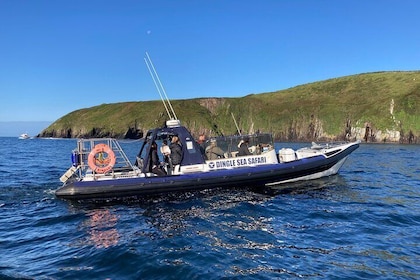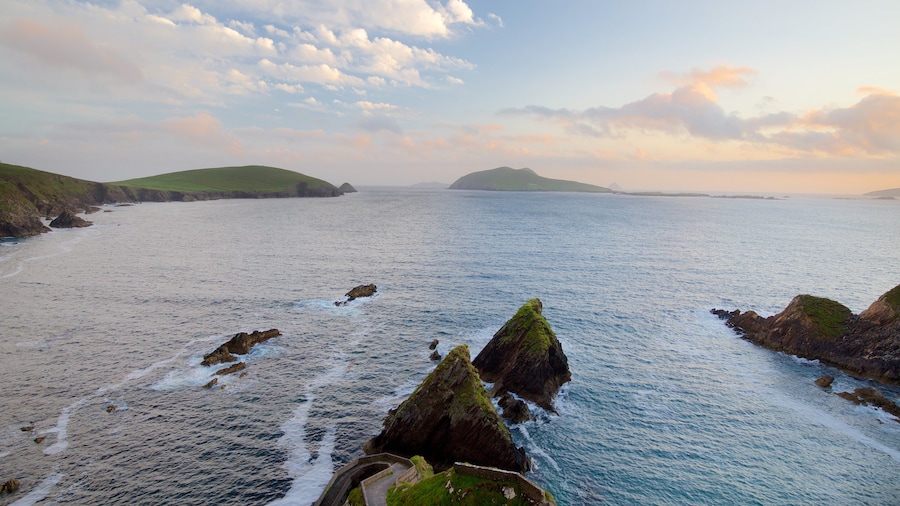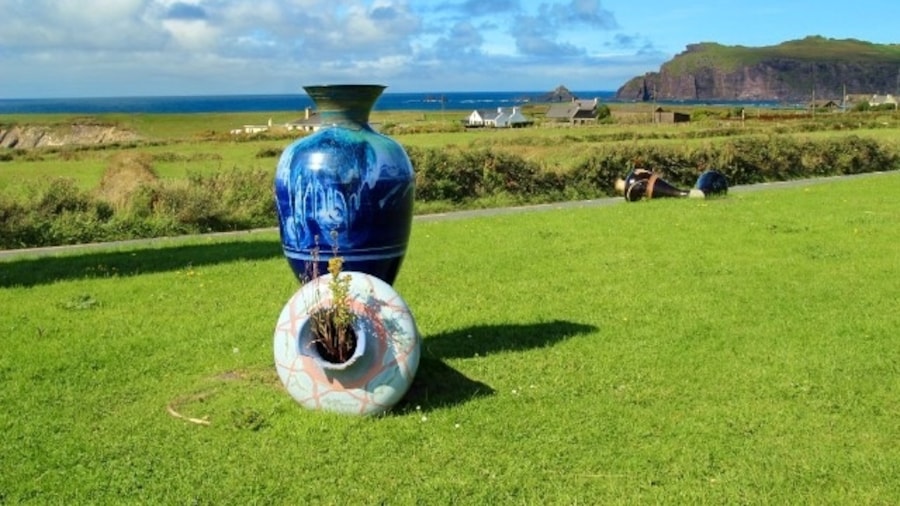Perched on far western Dingle Peninsula is the striking grass-covered promontory of Dunmore Head. This is the westernmost site of Ireland’s mainland and also one of the westernmost places in Europe. With undulating fields and centuries-old landmarks, Dunmore Head is a great place for hiking, photography and appreciating Ireland’s fresh coastal air.
Set out on foot along the natural trails crossing the headland. Peer down the cliff faces and watch as the waves of the Atlantic Ocean crash against the rocks below. Marvel at the views of secluded bays and sweeping beaches, such as Coumeenole Beach. Gaze back over the Dingle Peninsula to soaring mountains, including the 1,693-foot-tall (516-meter) Mount Eagle.
Look for an Ogham stone, discovered in 1838 and located at the headland’s tallest point. It serves as a reminder of Ireland’s age-old pagan ancestry.
Walk to the brink of the headland to experience a fascinating edge-of-the-world sensation. Spot the Blasket Islands, a group of rugged islands that were inhabited by an Irish-speaking community until 1953. Arrive for sunset when a magical light is cast over the islands and ocean. Boat trips to Great Blasket Island depart from nearby Dunquin Harbour, Dingle Marina and Ventry Harbour.
On sunny days, Dunmore Head is ideal for enjoying a relaxed picnic. Lay down a blanket, sit back and enjoy the beautiful natural scenery. Look for guillemots, puffins and razorbills, among other seabirds.
Dunmore Head is about a 30-minute drive west of Dingle. Rent a car and get here via the southern section of Slea Head Drive, which forms part of the Wild Atlantic Way. Find parking in the village of Coumeenole, which has direct access to the headland. Combine your visit with time at Coumeenole Beach, famous for its exposed shipwreck. This spot was a filming location for the 1970 movie Ryan’s Daughter, starring Robert Mitchum.





